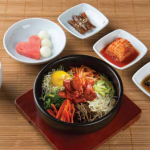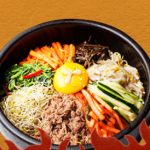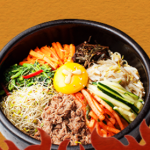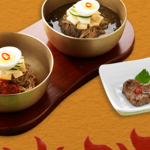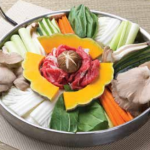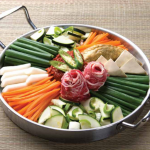Are you tired of the same old recipes on rotation and are looking to infuse some excitement into your cooking? Well, say annyeonghaseyo to the vibrant world of traditional Korean cuisine! With its rich flavors, unique ingredients, and dynamic cooking techniques, Korean dishes are sure to take your taste buds on an exhilarating journey.
Introduction: Embrace the Flavors of Korea
Korean cuisine is known for striking a perfect balance between heat, sweet, sour, and umami flavors. A true sensory delight, Korean dishes are not only visually appealing but also bursting with robust flavors and textures. From sizzling barbecue to mouthwatering stews, each dish is a testament to the country’s rich culinary heritage.
Sensational Cooking Techniques to Elevate Your Korean Cooking
If you’re eager to explore the realm of Korean cooking, here are some essential techniques and methods that will help you recreate authentic, delicious flavors:
1. Fermentation: A Gateway to Flavor Explosion
Fermentation is a fundamental technique in Korean cooking that introduces complex and tangy flavors. Kimchi, Korea’s most famous fermented side dish, is made by salting and preserving vegetables like cabbage and radishes with a blend of spices. The result is a harmonious combination of sour, spicy, and umami flavors that will leave your taste buds tingling with delight.
2. Jjigae: The Soul-Warming Stew
Jjigae, or Korean stew, is a hearty and comforting dish that warms both body and soul. Traditionally cooked in an earthenware pot, this stew incorporates a variety of ingredients such as tofu, vegetables, meat, or seafood. The key to a delicious jjigae lies in simmering the ingredients together, allowing their flavors to meld and create a harmonious, soul-satisfying dish.
3. Barbecue: Sizzle Your Way to Happiness
Korean barbecue, known as “gogi-gui,” is a social and interactive dining experience that will leave you craving for more. Whether you choose pork belly (samgyeopsal), beef short ribs (galbi), or succulent chicken (dak-galbi), grilling these marinated meats at the table is a feast for both the eyes and the taste buds. The trick here lies in achieving the perfect caramelization and a tender, juicy interior.
4. Japchae: Stir Up a Rainbow
Japchae is a vibrant and colorful dish consisting of stir-fried glass noodles and an array of vegetables. The key to mastering japchae lies in perfectly cooking each ingredient separately and then combining them at the end, ensuring that every bite bursts with a medley of flavors and textures. Don’t forget the sesame oil and soy sauce, which lend an irresistible depth of flavor to this classic Korean dish.
5. Bibimbap: Mix It Up
Bibimbap, meaning “mixed rice,” is a beloved Korean dish that allows you to unleash your creativity. This customizable bowl of goodness typically combines rice, a variety of vegetables, meat, and a fried egg. Top it all off with a dollop of gochujang, a spicy and savory chili paste, and mix everything together to create a symphony of flavors in every bite.
Conclusion: Embrace the Art of Korean Cooking
Now that you are familiar with some essential Korean cooking techniques, it’s time to embark on a culinary adventure through the fascinating world of Korean cuisine. From the spicy pleasures of kimchi to the sizzling delights of Korean barbecue, there is an endless array of traditional dishes waiting to be explored and savored.
So, gather the ingredients, sharpen your knife skills, and prepare to amaze your friends and family with your newfound knowledge of Korean cooking techniques. Get ready to tantalize your taste buds and immerse yourself in the captivating flavors of Korea!
FAQ
Q1: Are Korean dishes always spicy?
A: While Korean cuisine is famous for its love of spice, not all Korean dishes are inherently spicy. Many dishes can be tailored to suit your desired level of heat, allowing you to enjoy the flavors without overwhelming spiciness.
Q2: Can I substitute ingredients in Korean recipes?
A: Korean cuisine often features specific ingredients that contribute to its characteristic flavors. However, don’t hesitate to make substitutions according to your preferences or ingredient availability. Just be mindful that some flavors may differ slightly from the authentic dish.
Q3: Are there vegetarian or vegan options in Korean cuisine?
A: Absolutely! Korean cuisine offers a wide range of vegetarian and vegan dishes. Many classic dishes can be modified by omitting or replacing meat, and there are also numerous vegetable-centric dishes that celebrate the flavors of fresh produce.
Q4: Where can I find Korean ingredients?
A: Korean ingredients can be found in your local Asian grocery stores or online. Look for staples such as gochujang (Korean chili paste), doenjang (fermented soybean paste), and gochugaru (Korean chili flakes) to add authenticity to your Korean dishes.
Q5: How can I make my Korean dishes more authentic?
A: To make your Korean dishes truly authentic, pay attention to the balance of flavors, use traditional ingredients whenever possible, and focus on mastering the essential cooking techniques. Immerse yourself in the culture and explore Korean cooking methods to enhance the authenticity of your dishes.
So, are you ready to embark on your culinary journey to explore the delightful world of traditional Korean cuisine? Take a leap of faith, embrace the bold flavors, and let your creativity flourish in the kitchen. Happy cooking, or as they say in Korean, masigandeulgo gihoro daehan sigan-eul saranghanda!

